Table of Contents
Greetings, fellow ink enthusiasts! Today we are going to discuss the often mysterious, process of laser tattoo removal, focusing on what you should know when evaluating them. We’ll delve into their history, the technology underpinning their operation, and how to assess their effectiveness. With a touch of wit and a sprinkle of nerdiness, we’ll decode the complexities of these high-powered light-wielders, giving you the tools to decide if a laser tattoo removal machine is singing the right tune for you.
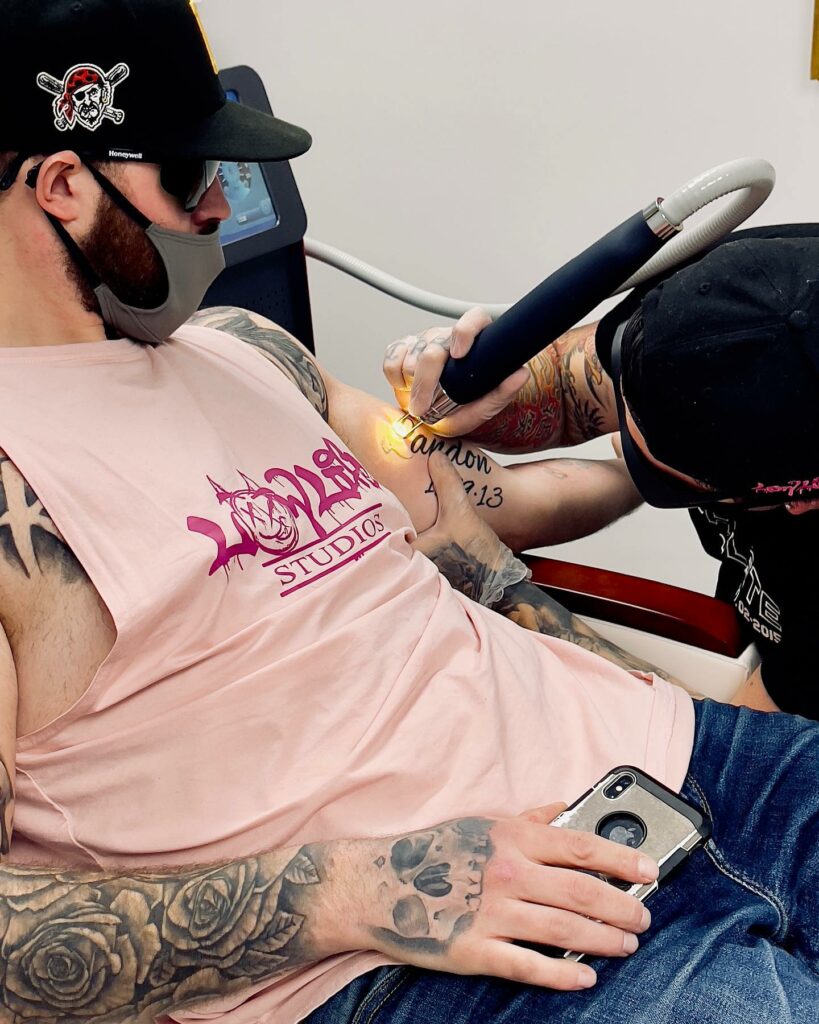
Magic Behind the Laser Tattoo Removal
Imagine a high-tech light show, but instead of illuminating a stage, the light’s focusing on that tribal dragon tattoo you thought was a great idea back in college. Laser tattoo removal machines work their magic by producing short pulses of high-intensity light, aimed at the tattoo ink under your skin. What’s extraordinary about these lasers is that they can shatter the tattoo ink into microscopic particles while leaving the surrounding tissue unharmed. Your body’s natural clean-up crew, the immune system, then steps in to gradually remove these particles over time.
When I first learnt about this, it was a real “Wow!” moment for me. I mean, who knew that the technology was so precise? And the best part? With a few sessions and a bit of patience, even a seemingly permanent tattoo can start to disappear.
Now, what gives these lasers their superhero powers? The key lies in variables like wavelengths, pulse duration, and spot size. I can tell you from my years in the field that these factors significantly affect the efficiency of the tattoo removal process. So, let’s get into some more details!
Wavelength Wonders in Tattoo Removal
Understanding wavelengths in the laser tattoo removal world is a bit like knowing your colors as a tattoo artist. Different wavelengths are better at targeting different ink colors within the skin. For instance, commonly used wavelengths like 1064 nm and 532 nm have their specific strengths. The 1064 nm wavelength is like your trusty black ink-removing buddy, while 532 nm is a wiz at dealing with warmer tones like red, orange, and purple.
Now, don’t think that those are the only players on the field! We also have the Q-switched alexandrite (755 nm) and ruby lasers (694 nm), which excel at tackling tricky light blues and greens. It’s a beautiful science, and investing in a machine that can operate with multiple wavelengths will ensure all ink pigments and skin tones are covered.
And let me tell you, it’s quite a sight seeing a once vibrant green tattoo gradually fade under the precise application of these lasers!
The Tale of Picoseconds and Nanoseconds
Moving on, let’s talk about time. In this case, we’re dealing with super-fast intervals, like picoseconds (one trillionth of a second) and nanoseconds (one billionth of a second). When it comes to laser tattoo removal, picoseconds are the shining stars. The energy in a picosecond laser is released quicker than a nanosecond laser, which means less heat exposure to the surrounding tissue.
In layman’s terms, it’s like using a very fast, very sharp scalpel instead of a slower, duller one. Quicker, cleaner, less damaging.
Having witnessed the efficiency of picosecond lasers, I’d personally recommend opting for a machine that operates at this speed. It’s like watching an expert artist at work, only in reverse!
Tips for Choosing Your Laser Tattoo Removal Machine
When it’s time to invest in a tattoo removal machine, it’s essential to keep several factors in mind. For example, you need to consider the machine’s compatibility with different types of tattoos—cosmetic, professional, or amateur. Also, check the range of spot sizes available. Having a variety of spot sizes is like having different sizes of tattoo needles—it allows for more precise and effective work.
Another aspect to consider is the ease of use. You don’t want to be wrestling with a machine when you’re trying to remove someone’s ink! Check reviews, consider the machine’s size, accessibility, cost, and of course, its technology.
In my career, I’ve seen all sorts of tattoos – from cosmetic eyebrow tattoos to professional artworks and DIY jobs. Each type has its peculiarities. Cosmetic ink, for instance, may oxidize, and professional inks can contain a medley of compounds that affect removal. Meanwhile, the “ink” in amateur tattoos could be anything from Indian ink to soot!
In terms of spot sizes, starting with larger ones to target the deepest ink, then moving to smaller sizes for the surface layers, is a method I’ve found most effective.
Finally, remember that getting the best equipment is only half the battle. You also need to ensure that you have the right training and support to use it effectively.
Candela PicoWay: The Industry’s Star
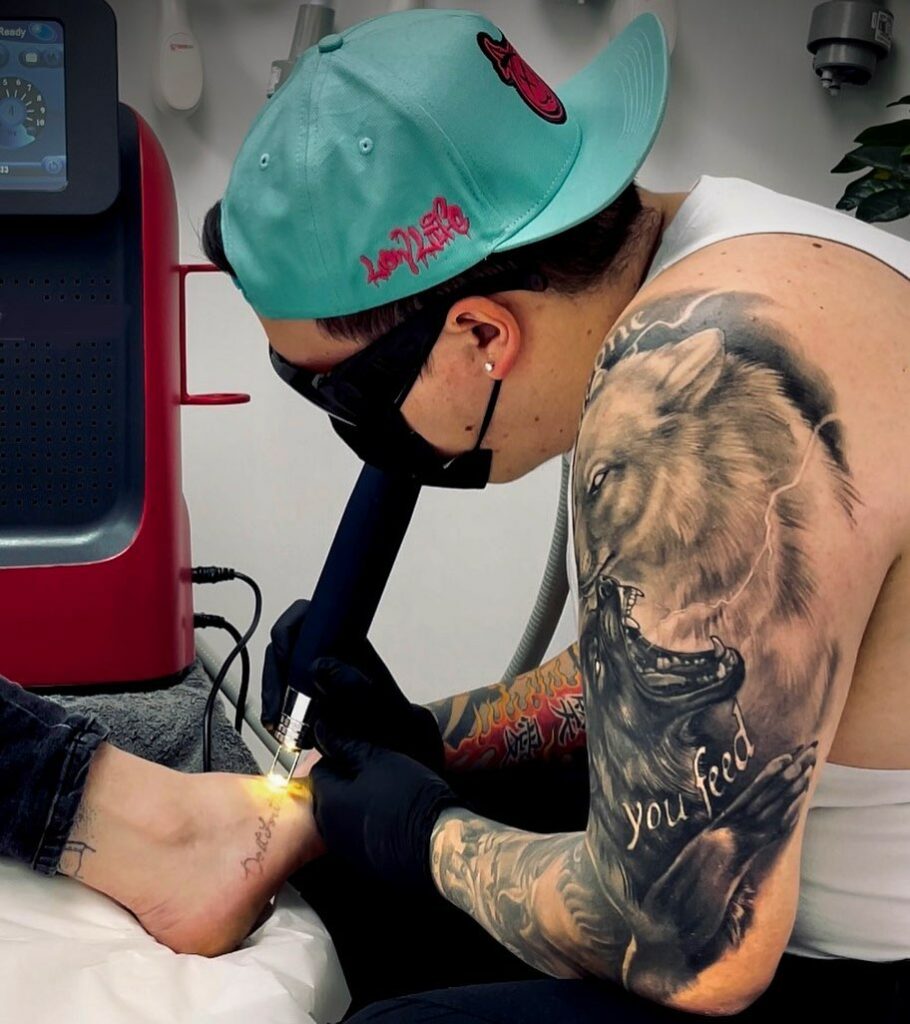
When it comes to laser tattoo removal, the Candela PicoWay takes the crown. And guess what, it’s the favorite machine in our studio! This high-tech wonder uses a photoacoustic effect (cool, huh?), which means it avoids heating and damaging the skin around your tattoo.
Pros and Cons:
To add a cherry on top, it comes with 1064 nm and 532 nm wavelengths installed and even has separate handpieces you can purchase for 785 nm and 730 nm. We’re talking serious versatility here, folks!
Here’s the tea: This machine is the darling of the FDA, it targets a wide spectrum of ink colors, and it’s gentle on all skin types. Plus, it works wonders on acne scars, wrinkles, and benign lesions.
However, there’s always a catch. This tattoo terminator carries a heavy price tag, clocking in around $175,000. But hey, beauty and technology are never cheap. And remember, unless you’re a certified professional, operating this beast could land you in some hot water, depending on your state’s laser regulations.
2) Quanta Pico Discovery Laser Tattoo Removal Machine
Stepping into the ring next is the Quanta Pico Discovery, which uses 1064 nm, 532 nm, and an available 694 nm wavelength. This powerhouse shatters ink while leaving your skin safe and sound. What’s more, it employs fractional treatments, perfect for treating wrinkles and acne scars.
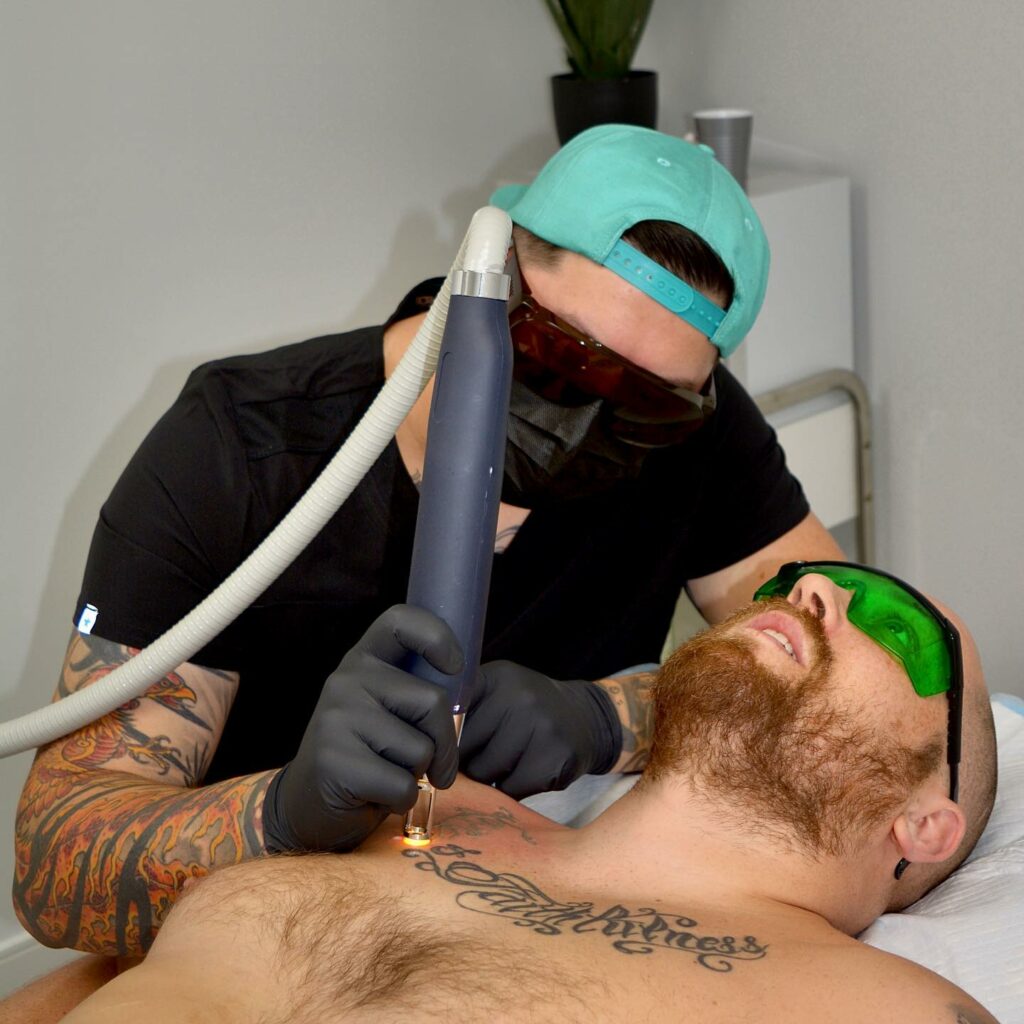
Pros and Cons:
Similar to the Candela PicoWay, this machine leans towards the pricier side. And you guessed it, it’s strictly for the professionals. This machine’s one downside? It only uses three wavelengths to tackle those stubborn inks.
3) PicoSure Tattoo Removal Laser by Cynosure
As the world’s first picosecond aesthetic laser, the PicoSure by Cynosure was a game-changer. Imagine the stir when it came out—I can still recall the excitement in the industry! Its three wavelengths work tirelessly to banish most ink colors.
Pros and Cons:
But here’s where it gets a bit tricky. The PicoSure relies on heat to shatter those ink particles, which can increase the risk of burns and hypopigmentation. It’s a bit like playing with fire, so be careful. Plus, it doesn’t play nice with all skin types. And, you’ll need to sit through multiple sessions to see complete results.
4) Lutronic Spectra Nano Laser Tattoo Removal Machine
Lastly, we have the Lutronic Spectra Nano. This nifty machine uses four wavelengths, and its short pulses ensure your skin’s safety.
Pros and Cons:
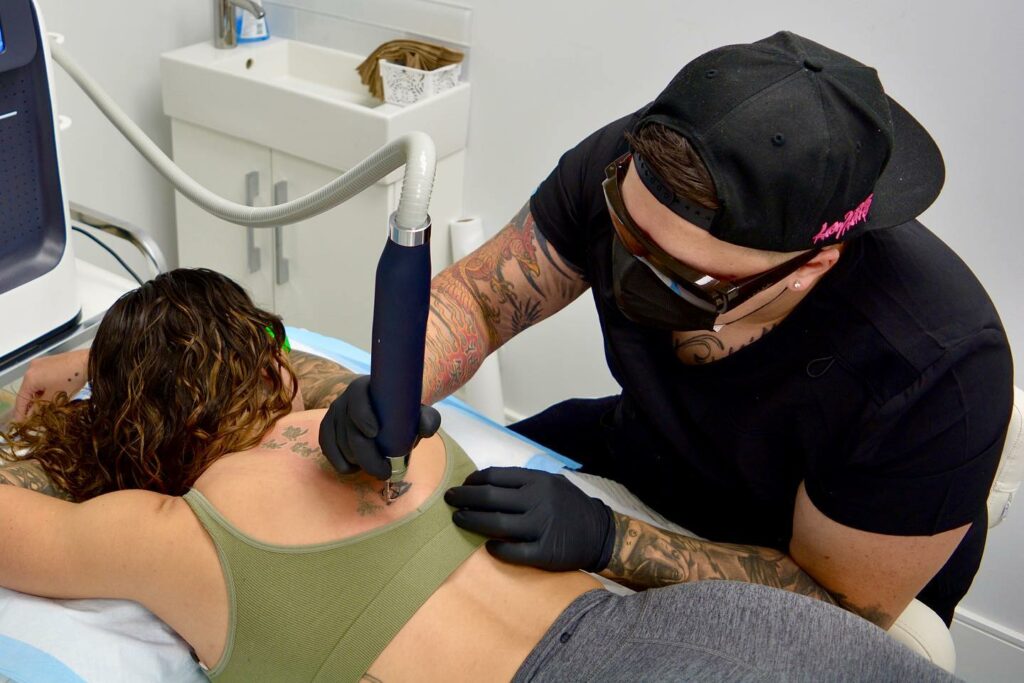
Although it ticks many boxes, it doesn’t offer the largest spot size on the market. Picture it like this: Larger spot sizes are like deeper bass notes, reaching the furthest corners of your tattoo, while smaller ones are your high notes, working on the surface. And working in nanoseconds, this machine needs more energy and can cause more heat in your skin.
5) Cynosure RevLite SI Laser Tattoo Removal Machine
The RevLite SI, created by the geniuses at Cynosure, is a q-switched multi-wavelength star that works magic on tattoos, acne scars, wrinkles, and pigmented lesions. This laser might be the jack-of-all-trades your studio’s been missing!
Pros and Cons:
It boasts of two wavelengths (1064 nm and 532 nm) to take on most ink pigments and even offers a SmartInfinite (SI) handpiece for precision. And who doesn’t love options? It even comes with different handpieces to adjust the spot size.
However, it does have some kinks. Its two wavelengths work best on black and red pigments, but blues and greens might be a tougher nut to crack. Plus, it’s a nanosecond laser, which means it might produce more heat in your skin.
6) Quanta Q Plus C Laser Tattoo Removal Machine
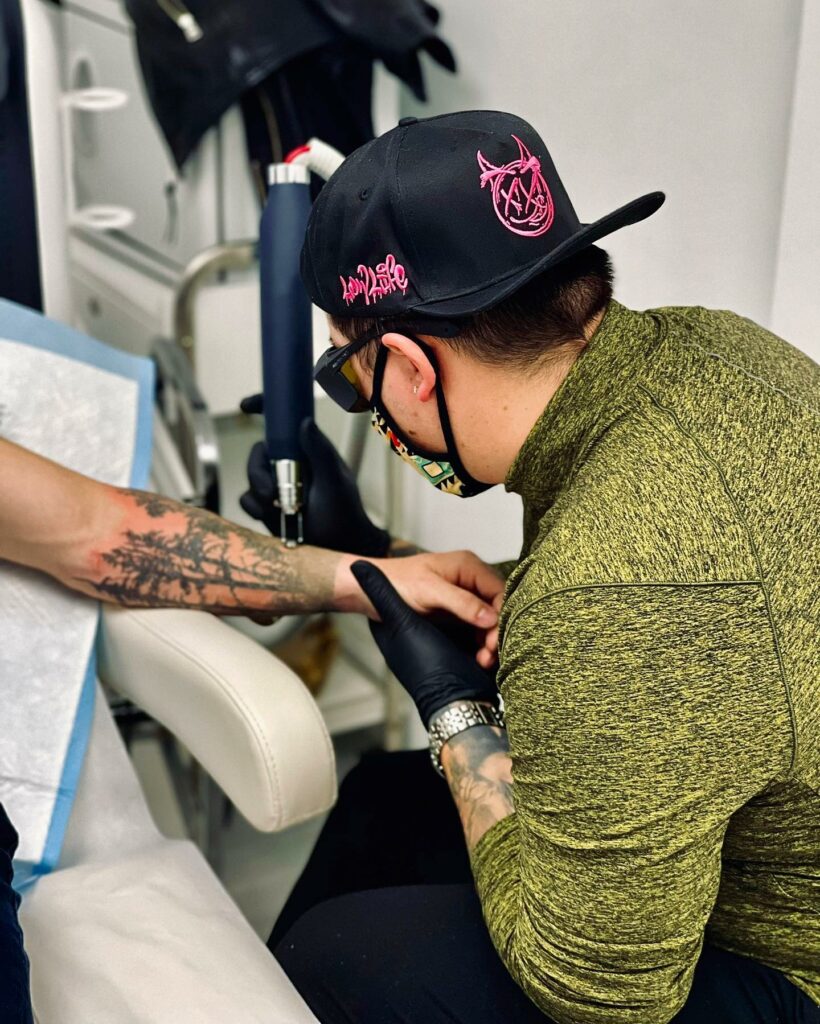
Ever heard of a laser tattoo removal machine that morphs to fit your needs? Enter Quanta Q Plus C. This machine can house two different laser sources, and with six different configurations available, adaptability is its middle name.
Pros and Cons:
Its highlights include the Optibeam II handpiece offering different spot sizes and a built-in skin cooler. Plus, it even offers optional handpieces for hair removal and tattoo removal.
But remember, these add-ons come at a cost. The machine also operates in nanoseconds, which could mean more heat for your skin. And considering all the bells and whistles, it might lighten your wallet significantly.
7) NEATCELL Hand-Held Laser Tattoo Machine (At-Home Option)
For the brave hearts who want to take matters into their own hands, the NEATCELL Hand-Held Laser Tattoo Machine offers a DIY solution right off Amazon’s shelves. Its portability and affordability are tempting, but is it all sunshine and rainbows?
Pros and Cons:
It’s definitely cheaper and can be operated by anyone. However, unlike the professional-grade machines, it’s not FDA certified. The lack of explanation about its light intensity or output frequencies can also be concerning. Plus, chances are, you’ll need more time to see the results you’re hoping for. And let’s not forget the risks involved, including potential skin damage due to improper use.
Can Laser Tattoo Removal be Done at Home?
The burning question, right? Technically, you can. But should you?
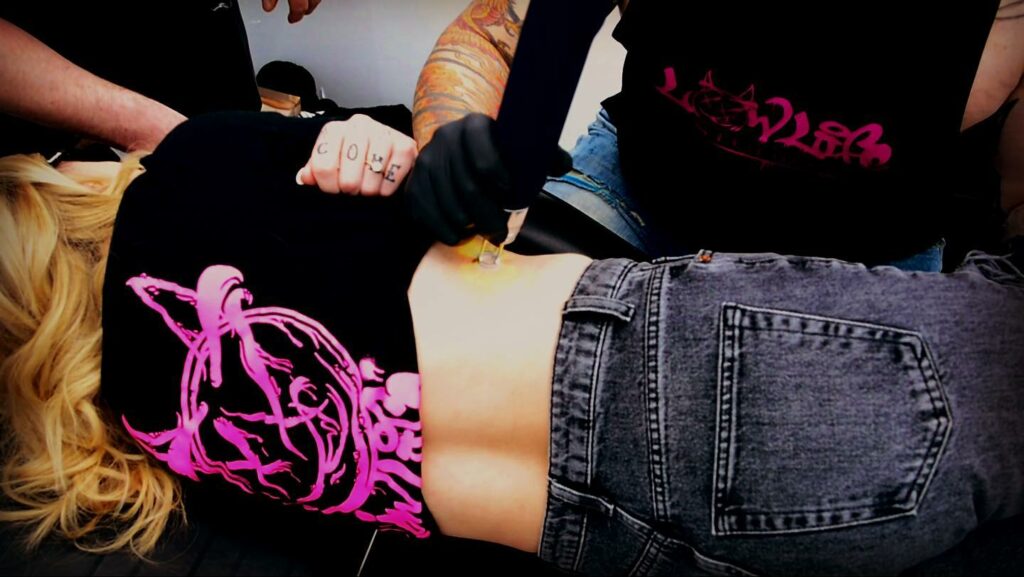
At-home tattoo removal is cheaper, convenient, and you’re in control. But remember, you won’t have the necessary power, spot size variance, pulse duration, or wavelength options that professional machines offer. Basically, it’s like comparing a flashlight to a lighthouse.
Experience and expertise matter, folks! When it comes to tattoo removal, just like getting a tattoo, you should always trust the experts.
How to Choose a Laser Tattoo Removal Machine
If you’ve made it this far, you’re ready to choose your very own laser tattoo removal machine. Keep in mind the key points from our guide: laser quality, wavelengths and additional settings, and cost. Whether you’re an experienced professional, an aspiring tattoo artist, or simply curious, remember to make an informed choice. After all, tattoos are beautiful art, but sometimes, even art needs a little editing!
How Much Do They Cost
Laser tattoo removal machines, in particular, can range dramatically in price, quality, and effectiveness. Let’s take a deeper dive into understanding the costs associated with these machines and make your investment journey a little easier!
The Cost Spectrum of Laser Tattoo Removal Machines
Like the vibrant colors of a full-sleeve tattoo, the cost of laser tattoo removal machines can stretch across a vast spectrum, from as low as $100 to a staggering $200,000! In the end, the price you’re going to pay is all about the quality you’re looking for.
If you’re aiming to provide top-notch service to your clients, expect to invest in high-quality lasers. From my experience, clients typically spend around $1,000-$2,000 for full tattoo removal services and $400-$600 for a slight fade to facilitate a cover-up. It might seem hefty, but the end results and the satisfaction of your clients will speak for themselves!
New vs Used Laser Tattoo Removal Machines: Weighing the Pros and Cons
Just as there’s no ‘one size fits all’ tattoo, there’s no ‘one answer’ when it comes to choosing between buying or leasing a new or used laser tattoo removal machine. I’ve seen professionals thrive with both choices, and I’ve also heard of their challenges. Here’s what you need to consider:
The Ups and Downs of New Laser Tattoo Removal Machines
There’s a certain thrill to unpacking a brand-new laser machine, knowing you’re the first to use it. A new machine promises less risk of damage and breakages. If you’re not quite ready to fully invest, some manufacturers offer leasing options, allowing you to access top-of-the-line equipment without outright ownership.
However, the shine of a new machine can also come with a higher price tag. If cost is a constraint, leasing might be a good way to go, but keep in mind that you won’t own the machine in the end.
Unwrapping the Realities of Used Laser Tattoo Removal Machines
On the flip side, purchasing a used machine can be more budget-friendly, and you get the bonus of insights from the seller’s experience with the device. However, this path isn’t without its pitfalls.
There’s always the risk of hidden damages and the potential for costly repairs. While the initial price may seem like a bargain, you might end up spending more in repairs and maintenance than if you’d invested in a new machine.
Navigating Financial Barriers and Options
It’s important to remember that financing options provided by manufacturers often require an upfront investment, which can pose an additional hurdle. As with any significant purchase, weigh your options and consider the pros and cons of buying new or used, and take into account the long-term implications of your investment.
I’ve seen many colleagues and friends go through this decision-making process. Some have had great success with leasing, while others swear by purchasing their machines outright. There isn’t a universal ‘right’ answer—it all comes down to what works best for you and your business.
Conclusion
As we wrap up our ink-credible journey into the world of laser tattoo removal machines, there are a few golden nuggets to keep in mind. Remember, my dear readers, placement is everything when it comes to tattoos. Whether it’s on a part of your body that’s frequently exposed to the sun or a spot that undergoes a lot of friction, the tattoo’s durability could be at stake. As for costs, they can swing anywhere from a few hundred to several thousand dollars, depending on the machine, the tattoo’s size, color, and complexity.
But what about the risks, you ask? Well, laser tattoo removal isn’t exactly a walk in the park. There might be discomfort, skin discoloration, infection, or even scarring. Not to mention, it takes multiple sessions to erase the ink. However, when performed by a certified professional, the risks are minimal and the results can be truly transformative. After all, tattoos are about expressing ourselves, and having the power to evolve our skin’s story over time is part of that beautiful process. Choose wisely, ink enthusiasts, and remember: tattoos may be permanent, but they don’t have to be forever.




